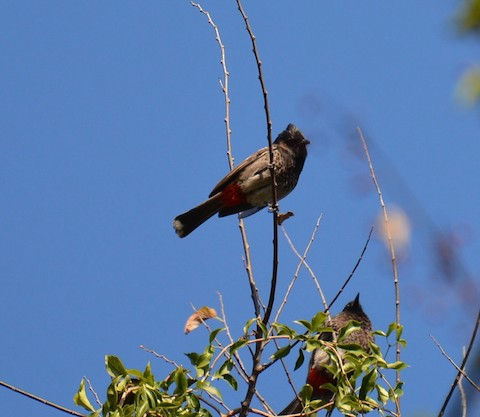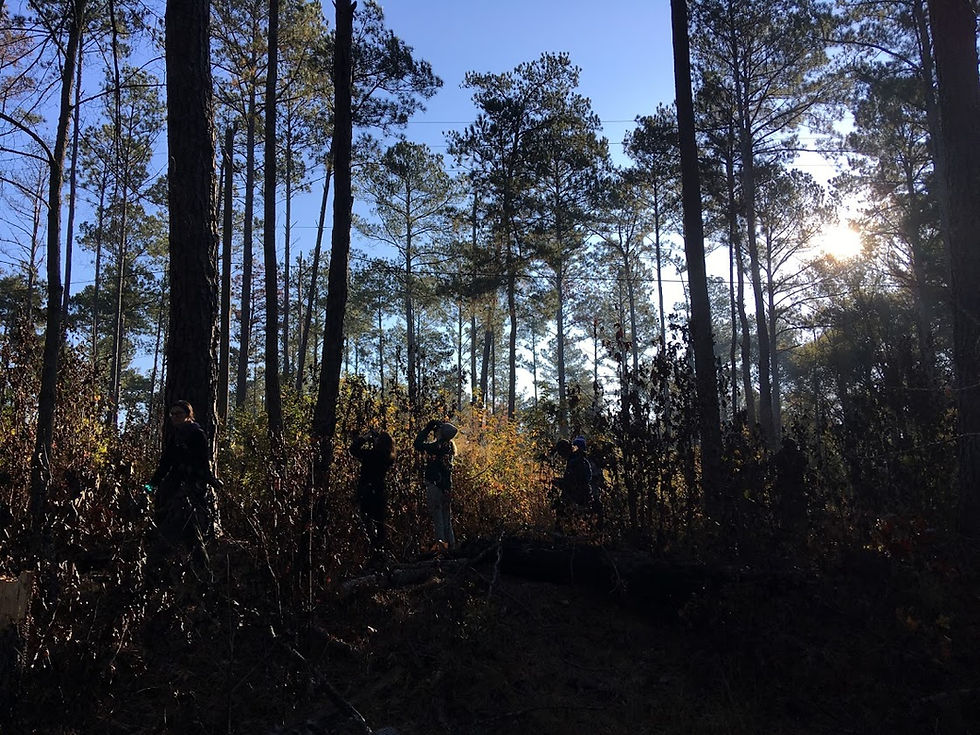Three Big Gains
- pnkleinhenz
- Sep 12, 2019
- 3 min read
The truly wonderful thing about Florida is that, if you need a new bird, it's usually not that difficult to find it. The habitat diversity of our state means that weird populations of birds seem to exist in every corner of the state and it often doesn't take much to find them.
In early July, with a Saturday free, Heather and I decided that the few new species possible around Gainesville made the 2 1/2 hour drive worth it. We first drove to an FWC managed area, Watermelon Pond Wildlife and Environmental Area, due to recent reports of Burrowing Owls visible from the road. I had known that a disjunct population of owls lived on adjacent property due to my work with FWC, but these usually aren't visible unless you go on a private tour. We drove up and down the road, scanning distant hills for the bump that translated to a burrowing owl. Nothing.
I was hoping to at least get some snakes on the road, but even they were scarce. Fortunately, the visit wasn't completely unproductive. Resting on a bush near the road, on the Watermelon Pond WEA side, was a new bird for us that I knew was possible but didn't expect to see. The black and white bird with a sharp beak could only be one thing: Loggerhead Shrike! Both Heather and I love these birds and we got a fabulous look at it up close. Loggerhead Shrikes seem to be declining for reasons that still aren't clear, and I certainly don't see them very often. To see one in a place as well-managed and protected as Watermelon Pond WEA made me hopeful that at least this population will survive long into the future.
Gainesville wasn't far away and, after failing to find White-winged Dove at a nearby cemetery, we made our way to the city. We've written before about the fantastic area that is Sweetwater Wetlands Park and there was no question that we'd be stopping there. We walked a loop through the easily-accessible wetland and one of our first birds shocked us. A Blue-winged Teal sat in a small ditch, seemingly oblivious that all of its friends and relatives left for areas far away from there for the summer. This bird was apparently reported as rare and, though it wasn't new for us, it sure was unexpected.
Somehow, we missed the snail kites on this visit but a unique call alerted us to something even more interesting, and possibly new. In the corner of a marsh, right by the trail, came a strange clucking call that neither Heather nor I recognized. We knew it had to be a wading bird and I immediately said, "Rail." We played a few calls, and nothing matched until we got to King Rail. We were in disbelief! King Rail was NOT a bird we were expected, either here or anywhere. Neither of us had it on our list. We played the call and, after a few minutes, the bird called again. We waited for maybe twenty minutes for the bird to show itself and it never did, but this didn't detract from our excitement one bit. I still needed to actually see a King Rail to add it to my personal list, but this one worked fine for our year list!
The final new bird of a day was a memorable one. After visiting and drinking some local First Magnitude beer with Heather's brother and his girlfriend, Heather and I made our way down Highway 441. A local birder had given me information that a rare bird made an appearance every day at dusk over a certain spot. We pulled up to the spot, sharing it with a birder already present, and waited.
While we waited, we were able to see some pretty neat birds. The road overlooked the northern section of Paynes Prairie State Park and we noticed Glossy Ibis, Limpkin, Osprey, and Green Heron just with binoculars from our spot on the road. Two distant shapes in a dead tree far in the distance, however, required the scope. Great Horned Owls! A pair was overlooking the edge of the marsh, obviously waiting for prey to show itself. We couldn't get too distracted, though. The time was almost upon us. The birder who gave me instructions said to look skyward at precisely 8:41 P.M.
When the time rolled around, nothing. We looked left, looked right, but then we spotted a shape coming towards us. Both Heather and I got the bird in the binoculars and easily identified our bird. It was a Barn Owl! Not only was this our first of the year, but this is a bird we were unsure if we'd find this year. Their distribution is spotty, especially in the Southeast, and it's







Comments